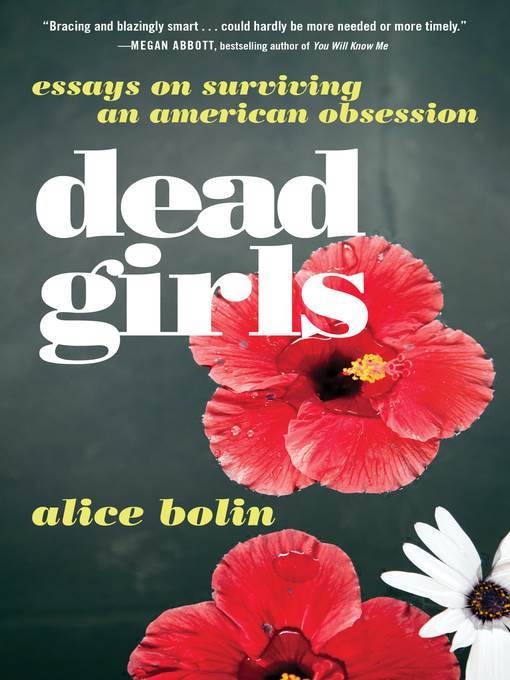
Dead Girls
Essays on Surviving an American Obsession
کتاب های مرتبط
- اطلاعات
- نقد و بررسی
- دیدگاه کاربران
نقد و بررسی

April 2, 2018
Bolin’s debut collection is a mixed bag of essays loosely based on female character tropes in pop culture and literature, from the “dead girls” of contemporary noir television shows to the teen witches and werewolves of film and literature. Discussing pop stars, Bolin defends Lana Del Rey’s burlesque show tour and astutely deconstructs Britney Spears’s oeuvre, contending that Spears’s early bubble gum facade masks “a prodigious loneliness.” Bolin riffs and flits through topics with tangents that don’t always connect to the main theme; in one essay she begins by exploring the femme fatales in the otherwise progressive detective novels of the Scandinavian duo Maj Sjöwell and Peter Wahlöö, touches briefly on Pippi Longstocking, and then ponders her father’s recent Asperger’s diagnosis. In the collection’s lengthy final essay, Bolin reevaluates her obsession with the writer Joan Didion, who admittedly inspired Bolin’s move to L.A. in 2014. In this piece, she recounts her own misadventures in a new city, which leads to the realization that Didion’s ethos of “glamorous desperation” may be just blind privilege. This last piece is a great personal essay—it’s smart, confessional, and fully developed—and the other works in this collection pale in comparison.

April 15, 2018
In this engrossing debut collection of essays, Bolin (Creative Nonfiction/Univ. of Memphis) looks at two things: America's cultural obsession with dead girls in works of literature and on TV and Los Angeles from the perspective of both a newcomer and a veteran."Our refusal to address warning signs that are so common they have become cliché means we are not failing to prevent violence but choosing not to," writes the author, the former nonfiction editor of Electric Literature's literary magazine, Okey-Panky. In fact, according to Bolin, Americans demonstrate a specific fascination with watching women die on screen, seeing them lose control over their lives to abusive husbands and societies, and, most crucially to her story, investigating the circumstances around their murders. To study these phenomena, the author explores shows like Twin Peaks, True Detectives, and Pretty Little Liars, among others. "If you watch enough hours of murder shows," she writes, "you experience a peculiar sense of déjà vu...the same murders are recounted again and again across shows." Interwoven with these analyses of pop culture is the story of the author's arrival in LA, broke, friendless, and with not much awareness of life under the sunny Californian sky. She drew many impressions of the city from the work of Joan Didion and Raymond Chandler, among others, who have painted a picture of a unique, bewildering city: "I was impressed by the unnerving sense of a city that sprang up overnight and sprawled like an invasive species over the landscape." Bolin's LA story becomes exemplary of her insights about female-obsession culture, from her wacky roommates to her boyfriends to her eventual private and public writing practices. The author's voice is eerily enthralling, systematically on point, and quite funny, though at times readers may not fully understand the motives behind their laughter.An illuminating study on the role women play in the media and in their own lives.
COPYRIGHT(2018) Kirkus Reviews, ALL RIGHTS RESERVED.

April 15, 2018
Media writer Bolin realized at a very young age that society loves a good dead girl. Analyzing the popularity of shows and radio programs like Twin Peaks, Serial, and Pretty Little Liars, it became abundantly clear that audiences adore a beautiful, innocent corpse. In her searing new essay collection, Bolin probes the generations-old obsession with young, tragic heroines. The topics of her exploration open broadly, dissecting the trope in television, film, and pop culture. Subject matter becomes more personal as the book progresses, meditating on Bolin's specific curiosity about California as a dead-girl breeding ground. The book's middle section chronicles Bolin's time living in the Golden State and walking the same, dehydrated earth as Sharon Tate, Patty Hearst, and any number of Joan Didion misfortu-femmes. In the final portion, Bolin ponders the role of nonfiction in eternalizing or stunting the world's toxic dead-girl fetish; the memoirist's pen, she believes, is especially mighty. Smart, thorough, and urgent, Bolin's essays are a force to be reckoned with.(Reprinted with permission of Booklist, copyright 2018, American Library Association.)

























دیدگاه کاربران